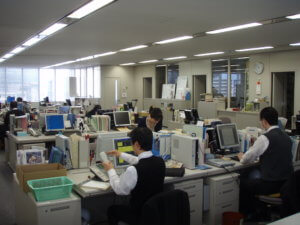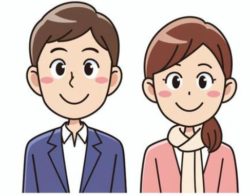A Long-term Vision for the Future: A Message for Mankind 5,000 Years from Now by Konosuke Matsushita
CONTENTS
Konosuke Matsushita's 250 Year Plan
Konosuke Matsushita’s vision didn’t just stop at business management; it extended to government and politics, and even to human happiness.
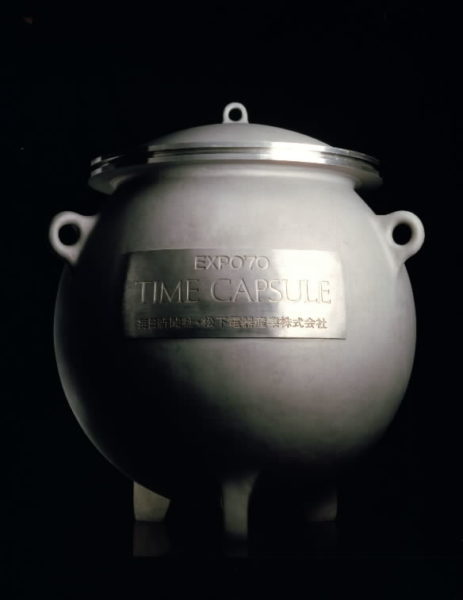
At 37 years of age, Konosuke Matsushita announced a 250-year plan for Matsushita Electric (now Panasonic). He declared that the mission of industrialists was to establish an earthly paradise suffused with goods and supplies that flowed like tap water, and that this would be accomplished over a 250-year period.
Aged 51, Konosuke Matsushita set up the PHP Institute in pursuit of peace and happiness for mankind.
Aged 85, he pinned his dreams on the 21st century, which would not be welcomed in for another 20 years, and invested seven billion yen of his personal fortune to found the Matsushita Institute of Government and Management, which would develop visionary leaders to help realize the ideal Japan for the next century,
Konosuke Matsushita didn’t just write about his dreams and ideals; he continued to put them into practice right up until his twilight years.
The Japan World Exposition
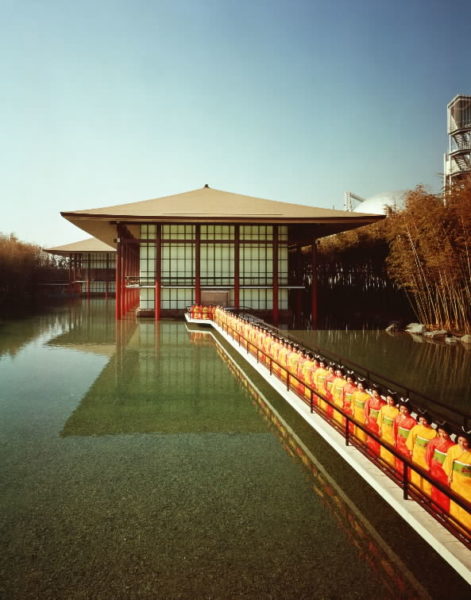
There is also a far-reaching project that will continue for 5,000 years into the future – a time capsule that was exhibited at the Japan World Exposition. A replica of that capsule is on display in the inner courtyard of the Konosuke Matsushita Museum.
The Museum is different to general industry museums, which center on exhibits of products. There is a conspicuous difference in approach, with exhibits in the Museum focused on passing down Konosuke Matsushita’s management philosophy. At a glance, the replica capsule housed there – a stainless-steel pod like something from the realm of science fiction – gives an impression of something totally divorced from that philosophy.
However, that very same capsule is infused with Konosuke Matsushita’s grandiose vision, which extends limitlessly into the faraway future.
The Japan World Exposition opened on March 3, 1970 and lasted for six months. It was held in Senrikyuryo, Osaka, and featured 77 participating countries from all over the world. It was a roaring success, with the total number of visitors climbing to about 64 million people, which is around half of Japan’s population. The Exposition was the first such international event in Asia, held during the peak of Japan’s rapid economic growth, and the Matsushita Group also set up an exhibition pavilion.
In competition with the avant-garde architecture pavilion, the Matsushita Group exhibition highlighted the beauty of Japan’s traditional architecture – an idea that came to Konosuke Matsushita after he saw a photograph of the enshrinement hall in Chugu-ji temple, Nara Prefecture.
The time capsule was installed right in the center of the hall as the eye of the exhibition, and fascinated a great many people.
Peace and happiness for mankind
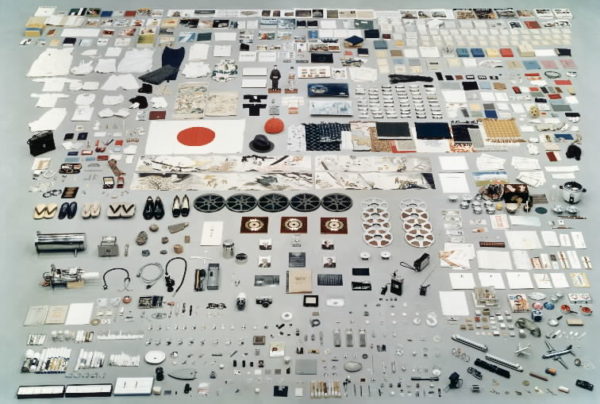
The time capsule, which was co-organized with the Mainichi Newspaper Company, was designed to convey the culture and technology of the present day to mankind 5,000 years in the future. A panel of experts was formed and 2,098 items were selected for inclusion. The items were greatly varied, from traditional crafts, illustrated scrolls that depicted everyday life, and literary works such as “The Tale of Genji” and “Snow Country,” to elementary and junior high school students’ compositions and drawings, and even product catalogs.
The project was not entirely run by Konosuke Matsushita himself, of course, but it typifies his strong desire to contribute toward mankind’s prosperity and happiness.
Among the items included was a phonograph recording of Konosuke Matsushita’s voice reading out his “Message sent to mankind 5,000 years from now.”
“Even scientists today say that the world is changing year by year. In addition, mankind’s living conditions are also changing moment by moment. We may think about such questions as how conditions on earth will have changed in 5,000 years, or how mankind’s way of life will have progressed, but we cannot possibly say ‘This is how it will be’ with any degree of accuracy. We can imagine so many various things. But it is the consideration of such questions that form one of our main interests in making this time capsule.”
Konosuke Matsushita gave the following answer in a television interview during the Exposition: “It’s one of my dreams. We can only live in this day and age, but how will the person think who opens it [the capsule] at that time? In what way will they think about things? It interests me to think about that… As we’ve become materially and spiritually unbalanced these days, how will that play out 5,000 years from now? Will they be in an unbalanced state, or will they have progressed in an ideal way, finding the right balance for living with body and mind as one? I think it’s a real issue. That’s why I want to send a warning now that we cannot afford to be unbalanced 5,000 years in the future. To that end, I put in the PHP book ‘Michi wo Hiraku’ (Open the Way).” Konosuke Matsushita authored it in 1968. It is a collection of short essays offering a deep insight into the life of humanity. It has been widely received and sold nearly five million copies in Japan so far. An English translated version, The Path, was published in 2018.
After the exposition had finished, two time capsules containing the same items were buried 10 and 15 meters underneath Osaka Castle Park respectively. It was decided that one capsule would lay dormant for 5,000 years, while the other would first be opened in 30 years, and every 100 years thereafter. This would allow the cultural conditions of each century to be inspected.
The time capsule tree
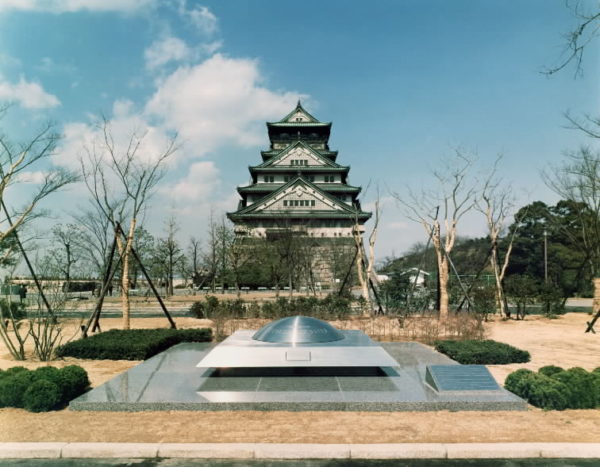
In the garden of the Museum stands a Japanese red pine. The pine is being attentively cared for and is growing rapidly. The young pine is still only around three meters tall and is surrounded on either side by large camphor and cherry trees, so unless you look carefully, you may miss the name plate “The time capsule tree.”
The seeds of the red pine were taken out of the time capsule when it was opened 30 years after the close of the Exposition, on March 15, 2000. Some of them had sprouted and taken root. One of the young trees was transferred to the garden in 2003 and became “The time capsule tree.”
When the tree was planted there, Hisao Kato, who was Museum Curator at the time, said the following: “This act is suffused with the aspirations of Konosuke Matsushita, who hoped for true peace and prosperity for mankind. This red pine is a living witness that will pass on Konosuke’s philosophy to the future.” That red pine became 13 years old this March. The next time the capsule will be opened when it will be a hundred years’ old in 2100. If any readers of this article are elementary or junior high school students, please visit at that time. Humans are living longer. The Japanese red pine is also a long-living tree. By then, it will surely be a large pine, wrapping the Museum in green, its trunk densely packed with growth rings. While looking up at the large tree, I’m sure you’ll give a thought to the dreams of that time capsule, greatly enlarged in the 22nd century.

